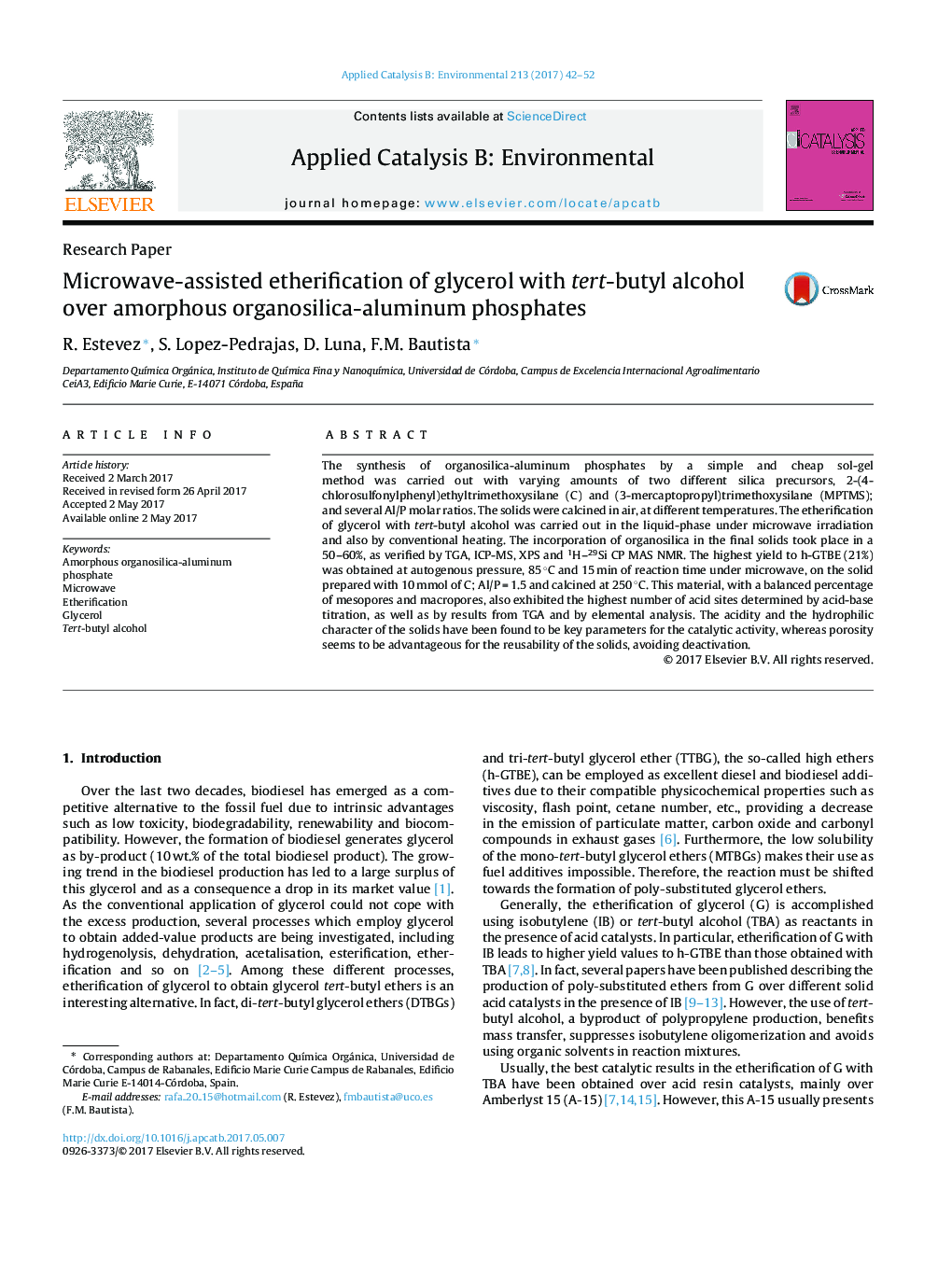| Article ID | Journal | Published Year | Pages | File Type |
|---|---|---|---|---|
| 6453871 | Applied Catalysis B: Environmental | 2017 | 11 Pages |
â¢Amorphous organosilica-aluminum phosphates were synthesized by a sol-gel method.â¢The catalytic activity is clearly related to the acidity of the solids.â¢The hydrophilic character of the solids avoids the deactivation caused by water.â¢The activity attained by microwaves was generally higher than by conventional heating.â¢High mesopores and macropores allow a good reusability of the solids.
The synthesis of organosilica-aluminum phosphates by a simple and cheap sol-gel method was carried out with varying amounts of two different silica precursors, 2-(4-chlorosulfonylphenyl)ethyltrimethoxysilane (C) and (3-mercaptopropyl)trimethoxysilane (MPTMS); and several Al/P molar ratios. The solids were calcined in air, at different temperatures. The etherification of glycerol with tert-butyl alcohol was carried out in the liquid-phase under microwave irradiation and also by conventional heating. The incorporation of organosilica in the final solids took place in a 50-60%, as verified by TGA, ICP-MS, XPS and 1H-29Si CP MAS NMR. The highest yield to h-GTBE (21%) was obtained at autogenous pressure, 85 °C and 15 min of reaction time under microwave, on the solid prepared with 10 mmol of C; Al/P = 1.5 and calcined at 250 °C. This material, with a balanced percentage of mesopores and macropores, also exhibited the highest number of acid sites determined by acid-base titration, as well as by results from TGA and by elemental analysis. The acidity and the hydrophilic character of the solids have been found to be key parameters for the catalytic activity, whereas porosity seems to be advantageous for the reusability of the solids, avoiding deactivation.
Graphical abstractDownload high-res image (100KB)Download full-size image
